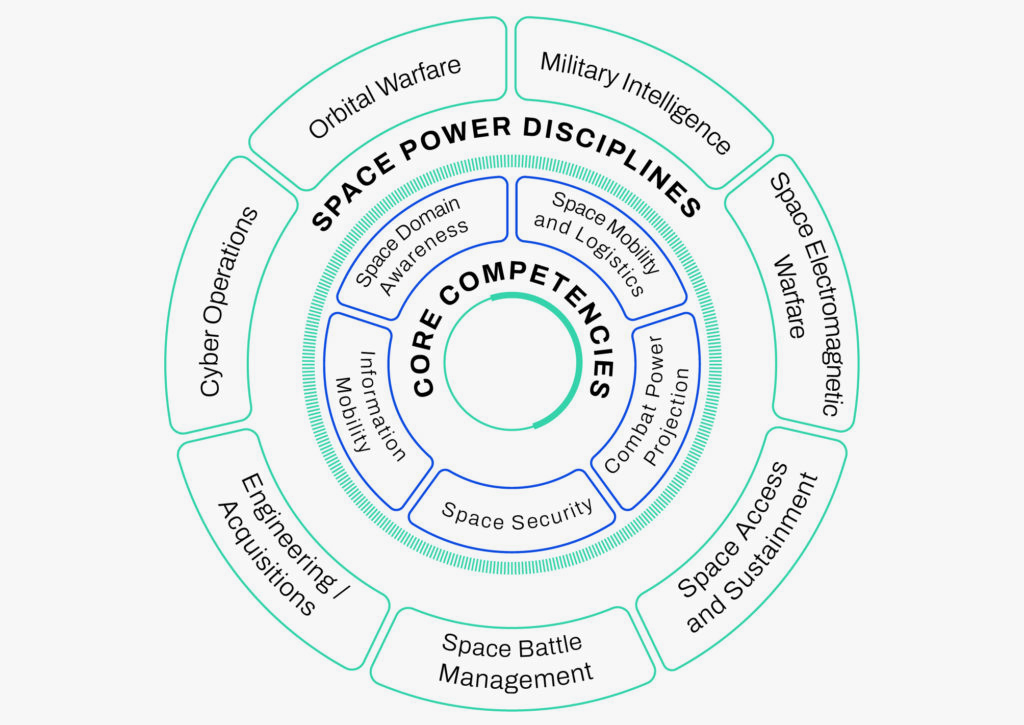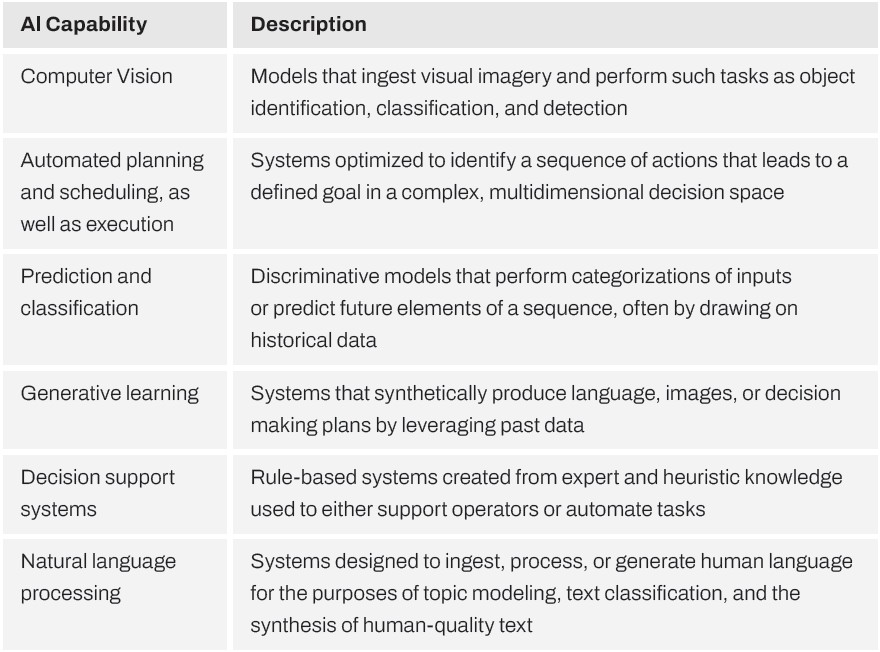Distinguishing Between Training and Education
As defined in the U.S. Department of Defense (DoD) Manual for Operation of the Joint Capabilities Integration and Development System (JCIDS) (Joint Staff J8, 2021), training and education are foundational parts of the DoD process to create non-materiel solutions to capability gaps. Non-materiel solutions are ways military effectiveness and efficiency can be improved without developing new military hardware. Training and education are critical to making these improvements, but before proceeding, we must better understand and distinguish between these terms. Many factors and concepts are involved, and there can be significant overlap, but perhaps the simplest and most important distinction is that military members train to operate effectively and efficiently in known and expected situations; they are educated to lead operations that can cope with the unknown and unexpected.
Military training teaches members about the capabilities and use of military equipment, its effective operational employment, and the best ways to conduct approved and standardized procedures to operate space systems. There is usually more training than education at the beginning of a space operator’s career, and education normally is a greater focus as members gain experience, particularly for officers. Appropriate training empowers members to develop tactics, techniques, and procedures (TTPs) and concepts of operations (CONOPS) to be successful in current military operations. Training is focused on the past and present, often using “lessons learned” (Joint Staff J3, 2021) from recent military operations. Exercises and simulations such as Space Flag test the ability of members to use TTPs and CONOPS without actual combat (Space Training and Readiness Command Public Affairs, 2024). Space training must enable members to become experts in all aspects of satellite operations, including launch, command and control (C2), identification and countering of attacks, and preparations to attack. Figure 1 depicts the core competencies and spacepower disciplines from the Spacepower Capstone Doctrine (Raymond, June 2020). Most critically, members must be trained to integrate digital data flows from satellites to enhance the combat effectiveness of terrestrial forces in efficient and timely ways.

Military education is present and future-oriented; it is generally a far larger part of developmental paths for officers than for enlisted members. Its ultimate goal is to enable military leaders to deal more effectively with non-standard, unknown, and unexpected challenges for which there are no established procedures. Military doctrine, “what is officially believed and taught about the best ways to conduct military affairs”, is a key starting point for thinking about the best ways to address these challenges (Hays, 1994). Officers who are steeped in all aspects of current space operations are best positioned to be given specialized education, gain insights, and develop innovative doctrine capable of handling novel challenges. Education is particularly important for space leaders because – unlike soldiers, sailors, and airmen – they cannot build from millennia or at least decades of experience in developing doctrine that enabled military success when fighting on land, at sea, and in the air. Education for space leaders must rely more on analogies, creative thinking, and robust dialogue and debate to develop the discernment needed for future success. Wargames and tabletop exercises such as the Schriever Wargame can be critical in helping space leaders develop insights and discernment (Space Systems Command, 2024).
Training Military Space Operators
Several interrelated and complex factors and questions are important considerations in shaping appropriate curricula for initial space training. First, what is the right educational background to begin space training? Some believe that only those with specific coursework or a degree in a science, technology, engineering, or mathematics (STEM) discipline are qualified to enter space training. Others believe that STEM qualifications are clearly needed to design launch vehicles, satellites, and communications networks for satellite uplinks and downlinks but are not necessary to operate space systems. Thus far, the U.S. Space Force (USSF) has required a high school diploma or the equivalent general educational development diploma for enlisted accessions and an undergraduate STEM degree for officer accessions. Given the recent establishment and tiny size of the USSF compared to the other U.S. Services, these USSF entry requirements do not yet display clear and tangible correlations with future career progression and successful space operations. Presently, there are only about 8500 enlisted and officer guardians, as well as some 8000 government civilians supporting the USSF (Space Systems Command, 2024). Simply put, the USSF has thus far chosen to be very picky with respect to who it lets in; the official recruiting website makes this clear: “Competition for these [guardian] positions is fierce – so to be accepted, you will have to make sure you stand out from other applicants.” (Space Systems Command, 2024). Unlike the other U.S. Services, the USSF has no problems meeting accession goals, currently has no path for officers from the other services to transfer into the USSF, and routinely rejects many volunteers who meet all minimum accession requirements. Other states looking to design space training should note that the USSF requirement for STEM undergraduate degrees for officer accessions is probably related more to the current oversupply of volunteers than any other factor, and this may not be an appropriate entry criterion for their own training.
All U.S. military services have separate training for enlisted and officer accessions. For the USSF, this is basic military training for those seeking to become enlisted guardians and officer training school to become officer guardians. Enlisted guardians attend the same seven-week basic training as enlisted airmen, with the addition of a USSF-specific curriculum that includes briefings on military doctrine and the structure of the USSF (Space Force). Following basic training, enlisted guardians attend job-specific technical training before being assigned to an operational unit. In September 2024, the USSF initiated a significantly redesigned and consolidated 12-month-long initial training course for officers. The new course is focused on great power competition and provides initial skills training in satellite, intelligence, and cyber operations. Following completion of the course, officers are “qualified to serve in cyber, intelligence, and space operations positions but will focus in one of the three disciplines, based on their aptitude, preferences, and the needs of the Space Force” (Air Force News Service, 2024). The new course is significantly longer, more detailed, and more comprehensive than the previous undergraduate space training course, a clear indication that senior USSF leaders believe more robust and holistic initial training is needed for guardian officers to operate successfully as space becomes increasingly contested.
There are several additional factors and questions that should be considered when developing initial space training curricula. First, should initial training be broad and generalized or specific and focused on the military member’s first operational assignment? With the new officer training course, the USSF has clearly chosen the former for officer guardians and continued with the latter approach for the basic training of enlisted guardians. It is noteworthy that the USSF has now implemented these divergent paths for the initial training of officers and enlisted guardians, but too early to assess their effectiveness. A related issue surrounds the fact that government civilians comprise about half of all guardians, but there is little focus or discussion about the training needs of this cohort. This may again be a function of an oversupply of highly qualified volunteers, but as the USSF matures, it must consider whether general or specialized initial training may be needed for government civilian guardians. Additionally, DoD must continue improving jointness in the employment of space capabilities by ensuring sufficient space content is provided in the initial training for all non-space members of the other services and routine deployment of guardians to operations staffs of combatant commands.
A second issue area concerns how much initial training should focus on the explosive growth of the commercial space sector and renewed competition in the civil space sector. Some coursework to provide background and context is needed in initial training to help guardians understand the rapid evolution of the space domain, but specialized training is probably more appropriate. Given the critical contributions of commercial space capabilities in supporting Ukrainian combat operations, it is particularly important for guardians to understand how best to integrate specific commercial systems like Starshield (Wall Street Journal, 2024).
A final issue is the security clearance level needed to begin initial training. The USSF has made progress in this area, particularly for officers, by requiring that students entering the new officer training course have a top-secret clearance with appropriate Sensitive Compartmented Information caveats included. This approach has enabled the USSF to overcome a significant shortfall in previous initial training for space officers when more complete and comprehensive training could not be provided on many of the space systems that are highly classified.
Some believe that only those with specific coursework or a degree in a science, technology, engineering, or mathematics (STEM) discipline are qualified to enter space training. Others believe that STEM qualifications are clearly needed to design launch vehicles, satellites, and communications networks for satellite uplinks and downlinks but are not necessary to operate space systems.
Dr. Peter Hays
Education of Military Space Operators
Developing appropriate educational pathways for space officer development requires consideration of more complex and more difficult issues and questions. Most of the concerns and questions about appropriate training – such as whether it should be specialized versus general and whether enlisted and officer guardians should have the same initial training – are also issues for education. Additionally, at some level, educational issues are inherently interrelated with notoriously difficult assessments surrounding the factors and attributes that contribute to the development of highly successful military leaders. While acknowledging these important leadership development issues, this paper attempts to build from the previous training issues and focus on specific space education issues rather than broader leadership development concerns.
One of the most important and controversial parts of the current USSF approach to officer development concerns the requirement for STEM degrees for officer accessions. A requirement for an undergraduate STEM degree seems logical and reasonable given the many technical aspects of space operations and the current oversupply of STEM-qualified volunteers. It should also be instructive that the carefully constructed core curriculum at all U.S. military academies provides graduates with a Bachelor of Science degree, regardless of whether their major is a “hard” discipline like astronautical engineering or a “fuzzy” one like international affairs. This STEM foundation enables junior officers to operate effectively in increasingly technical career fields such as space. On the other hand, several guardians have recently published articles that make powerful arguments that requiring STEM degrees for officer accessions is overly restrictive and unnecessarily limits the USSF from acquiring highly motivated and talented individuals with skills the USSF needs to develop more diverse and capable teams. Moreover, they found no correlation between officers who entered service as a Space Operations Officer (Air Force Specialty Code 13S) with a STEM degree and the eventual selection of officers for squadron command, arguably the most important step in developing leaders for senior command. The 2017 squadron commander selection board chose 24 officers, but only one started their career as a 13S with a STEM degree (Stewart and Agrawal, 2021).
Requirements for STEM-educated operators are particularly important as the USSF considers the best ways to conduct current and future routine satellite operations. Most commercial satellite companies normally have just a few junior employees on their operations floor at most times, even for very large satellite constellations. By contrast, the USSF often has many enlisted and a few officer guardians on the operations floor during routine satellite operations, even for small numbers of satellites. There are undoubtedly different needs and career paths for commercial satellite operators and the military, but the USSF satellite operations model seems to be growing increasingly outdated. With opportunities for more use of machine learning and artificial intelligence (AI) for satellite operations, this divergence is likely to grow larger and calls into question the efficiency of the USSF model. Under the Sentient Program, the National Reconnaissance Office is already using automated tipping and cueing from many types of satellites to optimize tasking of collection opportunities, one of the most complex of all satellite operations (National Reconnaissance Office, 2019). The AI capabilities listed in Figure 7.2 offer clear and growing potential for many space applications.

As a new and very small service, the USSF must carefully consider how it chooses from its limited pool of guardians who it should sponsor for an advanced academic degree (a Master’s Degree or Ph.D.) and how to utilize these individuals in subsequent assignments. At the request of the USSF, the RAND Corporation completed a comprehensive report on these issues that provides important findings and recommendations. Key findings include: USSF stakeholders believe the most important reasons for sponsoring guardians for advanced degrees are to develop critical thinking and reasoning skills, meet technical competency requirements for certain positions, foster innovation, and provide insight into bleeding-edge science; more clearly defined and detailed frameworks are needed to align academic program outcomes with the needs of USSF positions; the point in guardian’s careers when advanced degrees are earned is not well aligned with position requirements; and there are pathways other than advanced degree programs for guardians to obtain needed skills (RAND, 2024). To address these challenges, RAND recommended the USSF continue developing a comprehensive and detailed framework linking advanced degree needs with program outcomes; test incentives for guardians to self-fund advanced degrees; establish criteria for sponsoring enlisted guardians for advanced degrees; and consider alternate pathways to meet skill demands (RAND, 2024).
A final, critical consideration for space education is that it provides the shortest and clearest path toward the development of comprehensive space power theory. A short list of the most important military theorists throughout history includes Sun Tzu, Carl von Clausewitz, Alfred Thayer Mahan, Julian Corbett, Giulio Douhet, and Billy Mitchell; except for Corbett, each of these theorists was a military officer who developed their ideas after years of studying and practicing the art of war (Meilinger, 1997; DeBlois, 1999). This indicates that space officers who have spent years operating space systems and have long pondered and debated how they might best be employed in combat are the most likely candidates to develop robust and comprehensive space power theory. Education for these officers must consider additional, unique, and multidimensional characteristics of space, including the dual-use nature of most space systems and the highly divergent paths in the development of air power and space power thus far. Diplomats should work toward improving space governance in the hopes that space can be preserved as a mostly peaceful domain, but it is the responsibility of space officers to develop the doctrine for winning space wars. Paradoxically, as the Romans taught, preparing for war can be the best way of maintaining peace.
Most of the concerns and questions about appropriate training – such as whether it should be specialized versus general and whether enlisted and officer guardians should have the same initial training – are also issues for education.
Dr. Peter Hays
Recommendations and Conclusion
In 2019, the United States established the USSF and made other changes in national security space structures. During the past five years, the USSF has worked carefully to assess the adequacy of legacy space training and education programs, finding that initial training for officers, in particular, required substantial revision. While too early for a fuller assessment, the USSF’s approaches seem to be on solid footing, and it should stay the course with its current training and education programs. One test of the effectiveness and efficiency of the USSF’s programs may come if the current oversupply of volunteers to become guardians diminishes. The USSF should also reassess on an annual basis the continuing utility of its requirement for a STEM degree for officer accessions while preparing to relax this requirement if it is found to limit the diversity and effectiveness of guardians.
Appropriate insights for the space training and education programs of other states are primarily related to the focus, size, and specialization of their respective space forces. States with limited focus on space and small space units have little need for specialized space training and education; they may be able to supply most of their space capability needs from commercial space service providers and not require military space operators. As the space ambitions of various states grow, they will face an increasing need for space training and education. In most cases, it would be appropriate to start with small and generalized programs and then evolve those programs to become more specialized as their space operators find they require greater specialization to be effective as space becomes increasingly contested.
References
Chang, C. and Burns, D. (2024), Schriever Wargame 2025: Space Planning For Future Operations [Online] Space Systems Command Warfighter Integration Office. Available from: https://www.ssc.spaceforce.mil/Newsroom/Article-Display/Article/3890751/schriever-wargame-2025-space-planning-for-future-operations
De Blois, B.M. (Col) (ed.) (1999). Beyond Paths of Heaven: The Emergence of Space Power. Maxwell Air Force Base: School of Advanced Airpower Studies. Available from: https://www.airuniversity.af.edu/Portals/10/AUPress/Books/B_0070_DEBLOIS_BEYOND_PATHS_HEAVEN.PDF
Gates, R. and Clapper, J. (2011), National Security Space Strategy: Unclassified Summary. Office of the Director of National Intelligence. Available from: https://www.dni.gov/files/documents/Newsroom/Reports%20and%20Pubs/2011_nationalsecurityspacestrategy.pdf
Harrington, L., Hanser, L., Hardison, C., Terry, T., Kushner, J., Schneider, L., Lawrence, A., and Rico, M. (2024) Advanced Academic Education in the U.S. Space Force: Strategies for Developing a Technical Workforce. RAND Corporation. Available from: https://www.rand.org/content/dam/rand/pubs/research_reports/RRA1700/RRA1750-1/RAND_RRA1750-1.pdf
Hays, P. (1994) Struggling Towards Space Doctrine: U.S. Military Space Plans, Programs, and Perspectives During the Cold War. PhD thesis. Fletcher School of Law and Diplomacy. Available from: https://apps.dtic.mil/sti/pdfs/ADA281988.pdf
Headquarters United States Space Force. (n.d.), Basic Military Training [online]. Available from: https://www.spaceforce.com/training
Joint Staff J-8. (2021) DoD Manual for Operation of the Joint Capabilities Integration and Development System (JCIDS). Department of Defense. Available from: https://www.dau.edu/sites/default/files/2024-01/Manual%20-%20JCIDS%20Oct%202021.pdf
Joint Staff J-3. (2021) Chairman of the Joint Chiefs of Staff Instruction 3150.25H Joint Lessons Learned Program. Department of Defense. Available from: https://www.jcs.mil/Portals/36/Documents/Doctrine/jlld/cjcsi3150_25h.pdf?ver=IDfjCK6dZDxVnjgNj0Ow3g%3d%3d
Maidenberg, M. and FitzGerald, D. (2024), Musk’s SpaceX Forges Tighter Links With U.S. Spy and Military Agencies [Online] Wall Street Journal. Available from: https://www.wsj.com/tech/musks-spacex-forges-tighter-links-with-u-s-spy-and-military-agencies-512399bd
Mattis, J. (2018) Summary of the 2018 National Defense Strategy of The United States of America: Sharpening the American Military’s Competitive Edge. Department of Defense. Available from: https://dod.defense.gov/portals/1/documents/pubs/2018-national-defense-strategy-summary.pdf
Meilinger, P.S. (Col) (ed.) (1997). The Paths of Heaven: The Evolution of Airpower Theory [online]. Maxwell Air Force Base: School of Advanced Airpower Studies. Available from: https://www.airuniversity.af.edu/Portals/10/AUPress/Books/b_0029_meilinger_paths_of_heaven.pdf
National Reconnaissance Office. (2019) Sentient Program. National Reconnaissance Office. Available from: https://www.nro.gov/Portals/65/documents/foia/declass/ForAll/051719/F-2018-00108_C05113688.pdf
Raymond, J. (2020) Space Capstone Publication Spacepower: Doctrine for Space Forces. Headquarters United States Space Command. Available from: https://www.spaceforce.mil/Portals/1/Space%20Capstone%20Publication_10%20Aug%202020.pdf
Secretary of the Air Force Public Affairs. (2024), First consolidated Officer Training Course for Guardians to begin [Online] Department of the Air Force. Available from: https://www.spaceforce.mil/News/Article-Display/Article/3884705/first-consolidated-officer-training-course-for-guardians-to-begin/
Space Training and Readiness Command Public Affairs. (2024) Preparing for tomorrow: Space Flag 24-1 strengthens operational readiness. Space Training and Readiness Command. Available from: https://www.spaceforce.mil/News/Article-Display/Article/3767362/preparing-for-tomorrow-space-flag-24-1-strengthens-operational-readiness/
Stewart, B. (Maj) and Agrawal, R. (Col). (2021) USSF, “OverSTEMulated: The Science and Art of Space Power Leadership. Air & Space Power Journal (Summer 2021): 55-67 [Online]. Available from: https://www.airuniversity.af.edu/Portals/10/ASPJ/journals/Volume-35_Issue-2/F_Stewart_Agrawal.pdf
Taylor, R.E. Jr. (2024), From Earth to Orbit…A Guide to Becoming a Guardian! [Online] Space Systems Command. Available from: https://www.ssc.spaceforce.mil/Newsroom/Article-Display/Article/3768622







